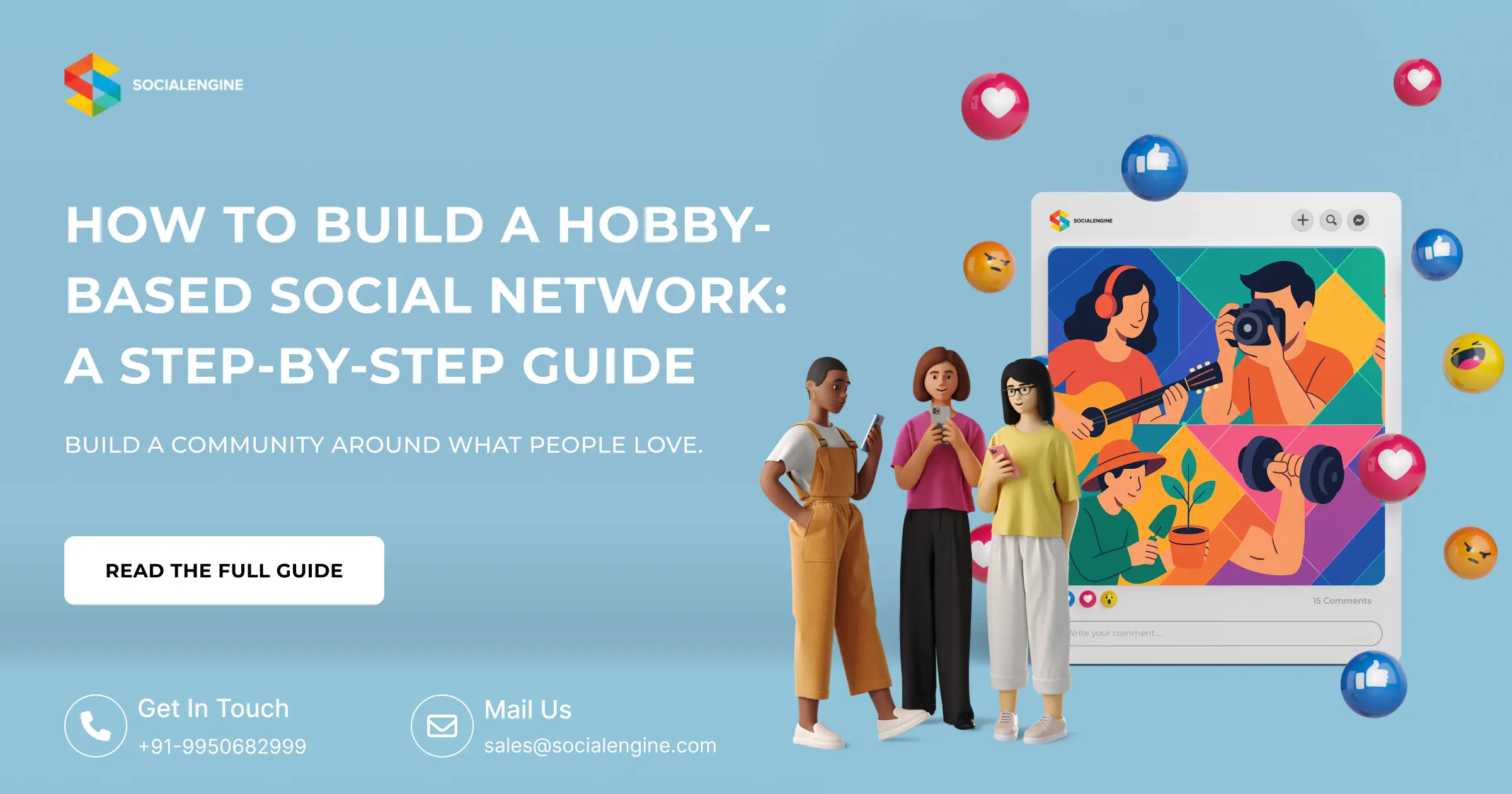
Imagine a space where everyone in attendance shares a common appreciation for organized business, painting, hiking, gaming, cooking, whatever your passion may be. Instead of scrolling through a billion unrelated posts, you enter a community built entirely around your hobby, filled with people who speak the same language. That’s the power of a hobby-based social network.
In this blog, we’ll explore why starting a hobby-based social network is a smart move, outline the features your platform needs, provide a step-by-step guide, and offer proven tactics to grow, engage, retain, and monetize your community.
Why Launch a Hobby-Based Social Network?
Today’s internet users crave deeper interest-specific communities. Mainstream social media is great for reach, but it rarely builds meaningful, long-term engagement.
Here’s why hobby-based social networks work so well:
1. Growing Demand for Niche Communities
People want distraction-free surroundings to explore what they love. If someone is a baker, gamer, musician, or pet owner, then building niche communities provides them with a focused space to learn and connect with other members.
2 Authentic, Like-Minded Connections
Sharing hobbies naturally creates trust and meaningful relationships. These networking fosters real conversations, shared experiences, and long-term friendships.
3. Opportunities to Learn and Improve
Members of your community will grow through tutorials, tips, workshops, peer feedback, and user-generated content.
4. Build Your Brand or Influence
Creators, experts, and businesses can stand out, earn trust, and establish authority by hosting their own niche community.
5. Strong Opportunities for Monetization
Premium memberships, exclusive groups, hobby marketplaces, events, and digital products create strong revenue potential.
Understand Your Audience Before You Build
Before you create your hobby-based platform, analyze these things so that you won’t be left with any pointers:
- Who your niche audience is
- Their problems
- Their preferred content formats
- What they currently lack in other social platforms
- Their skill level (beginner, intermediate, pro)
Step-by-Step Guide to Building Your Hobby-Based Social Network
Let’s go through step-by-step to build your hobby-based social networking platform.
Step 1: Define Your Hobby Niche and Purpose
Choose a specific niche (e.g., landscape photography, vegan baking, indoor plants). Define your mission, learning, sharing, showcasing, competitions, and other activities.
Step 2: Choose the Right Community Platform
Pick a platform like SocialEngine that supports you in scalability, customization, privacy, and essential community features.
Step 3: Set Up the Basic Structure of Your Site
Add your homepage, profiles, feeds, groups, menus, branding, and design layout.
Step 4: Add Essential Community Features
This prepares members for interaction and engagement.
Step 5: Customize and Brand Your Platform
Use your niche identity, colors, banners, icons, and visual elements that reflect your hobby.
Step 6: Test the User Experience
Check signup flow, posting experience, notifications, mobile responsiveness, and speed.
Step 7: Soft Launch to a Small Beta Group
Invite early members, collect feedback, and refine the platform.
Step 8: Launch Publicly
Promote the network through social media, influencers, email lists, groups, and niche communities.
Explore real-world examples of successful networks in: Who Uses SocialEngine & How They Profit from Online Communities.
Key Features Your Hobby-Based Social Network Should Include
To make your platform engaging, intuitive, and valuable, make sure it has:
1. Hobby-Focused User Profiles
Allow users to showcase skills, experience, achievements, photos, recipes, and projects depending on your niche.
2. Groups & Subcommunities
Let users join specific sub-niches like:
- “Beginner Gardening”
- “Landscape Photography”
- “Latte Art Basics”
- “DIY Home Décor”
3. Content Sharing Tools
Photos, videos, blogs, tutorials, guides – easy sharing keeps the platform alive.
4. Event Management & Meetups
Workshops, webinars, Q&A sessions, and local meetups build real connections.
5. Messaging & Notifications
Real-time messaging and alerts help users stay engaged and connected.
6. Gamification & Rewards
Badges, points, leaderboards, and ranks motivate participation.
7. Mobile Optimization
Ensure smooth usage on all devices since most users access communities on mobile.
How to Grow and Engage Your Community?
Once your platform is live, focus on increasing activity and retaining members.
1. Encourage User-Generated Content
Let members share tutorials, photos, stories, reviews, and experiments.
2. Host Online and Offline Events
Webinars, expert sessions, contests, workshops, and meetups boost engagement.
3. Recognize Your Most Active Members
Public shoutouts, badges, and leaderboard positions increase motivation and consistency.
4. Promote Your Community on Social Media
Share highlights, success stories, top posts, and testimonials from your platform.
5. Collaborate With Influencers & Experts
Industry voices bring trust, authority, and new members.
6. Start Meaningful Conversations
Post weekly questions, polls, challenges, and discussion starters.
Monetization Opportunities
Once your hobby-based social network community becomes active, you can monetize through:
- Premium membership tiers
- Paid events and workshops
- Exclusive groups
- Branded product promotions
- Affiliate programs
- Marketplace listings
- Digital products (Ebooks, presets, templates)
Conclusion
Creating a social networking site to support your hobby is much more than making a platform-it’s about creating a place for people with the same interests to meet, connect, learn, and grow together. Forward-thinking site owners and designers construct sites that are exciting and valuable for their members, with a niche, unique features, and member engagement strategies
💡 Ready to build your own social network?
🚀 Try SocialEngine CMS today – the most powerful platform to create your own custom community site.



